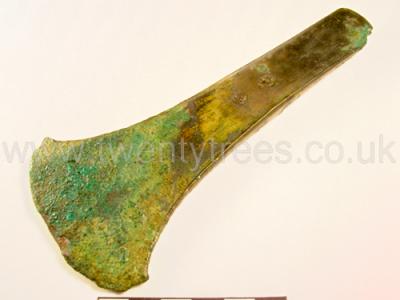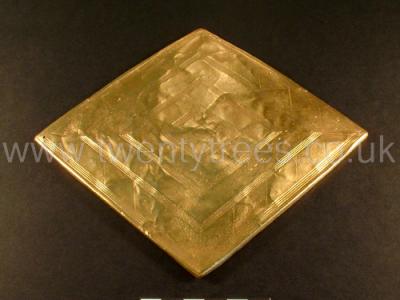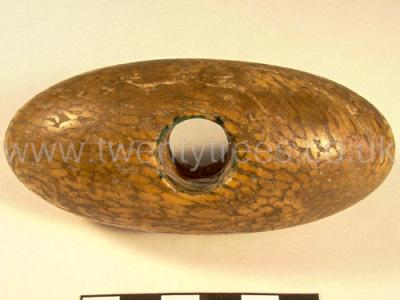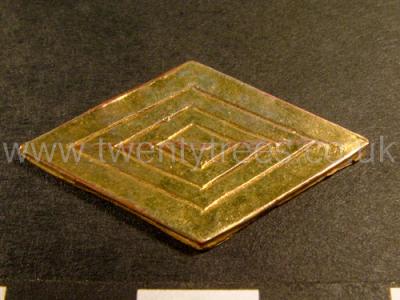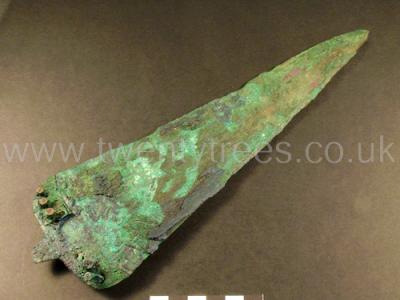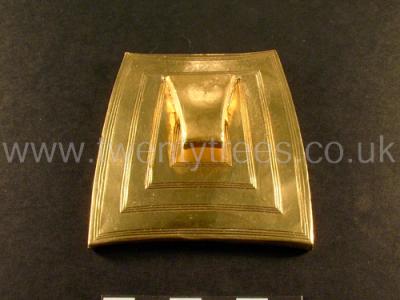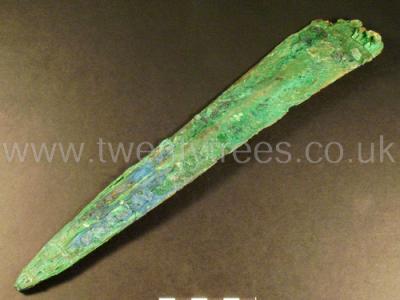Biography of William Cunnington 1754-1810
Paternal Family Tree: Cunnington
William Cunnington 1754-1810 is in Antiquaries.
2500BC. Marden Henge aka Hatfield Earthworks [Map] is the largest Neolithic Henge enclosure discovered to date in Great Britain; its greatest width is 530m and area is 142,000 sq metres. Within the henge was the Hatfield Barrow which collapsed under excavation by William Cunnington around 1805. It isn't known whether the Henge contained standing stones.
Between 2000BC and 800BC. Oakley Down Barrow Cemetery, Dorset [Map] is a group of around thirty Bronze Age Round Barrows. Many of the barrows were excavated in the early 19th century by Richard Colt Hoare 2nd Baronet and William Cunnington.
In 1754 William Cunnington was born to John Cunnington (age 24) and Elizabeth Cooper.
Around 1772 William Cunnington (age 18) moved to Heytesbury, Wiltshire [Map] where he was to live for the rest of his life.
In 1787 William Cunnington (age 33) and Mary Meares were married. They had three daughters.
1798. Letter of William Cunnington (age 44)
I have also visited Stonehenge since I saw you, where, in digging with a large stick under those two very large stones1 which fell down about three years ago, I was much surprised to find several pieces of black pottery similar to those found on the above downs, among which was the bottom of a small vessel in form like the bottom of a tumbler glass, but of the same black fine polished pottery above, which I used to think was Roman. I also found several bones of deer or sheep. From these specimens of pottery, the magnitude of this stupendous structure, and other circumstances, I am of opinion our ancestors (if I may so call them) were not so barbarous nor so ignorant of the arts as some suppose them when the Romans first invaded this isle.
Note 1. The stones of the northern trilithon which fell on 3 January 1797.
Archaeologia Volume 15 Section XXXIII. Further Account of Tumuli opened in Wiltshire, in a Letter front Mr. William Cunnington (age 51), F.A.S. to Aylmer Bourke Lambert, Esq. F.R.S. F.A.S. and F.L.S. Communicated by Mr. Lambert. Read, Feb. 7, 1805.
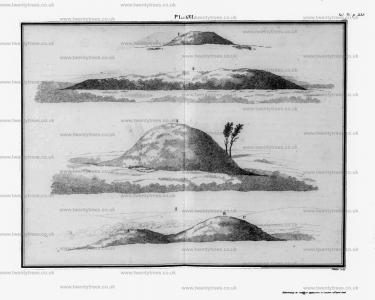
Archaeologia Volume 15 Section XI Page 128. Description of the opening of Golden Barrow aka Upton Lovell 2e [Map] by William Cunnington (age 51).
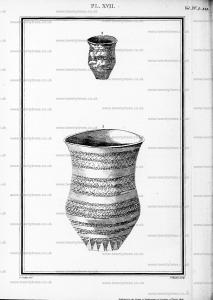
Archaeologia Volume 15 Section XI Page 126. Description of the opening of Golden Barrow aka Upton Lovell 2e [Map] by William Cunnington (age 51).
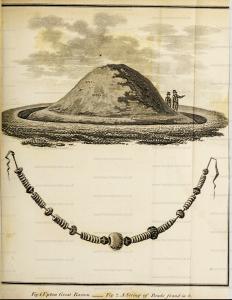
On 31 Dec 1810 William Cunnington (age 56) died.
Wiltshire Archaeological Magazine 1894 V28 Pages 172-173. Opening of Barrows, &c., near Haxon. By William Cunnington.
In June, 1851, I opened a long barrow east of Combe, about half-a-mile from Beach's Barn, and nearly south-west from Everleigh Church, which had been ploughed over for some years, and reduced in height to little more than 4ft. There was no central interment, but at the east end we found a very great heap of large flints, beneath which were many skeletons in complete disorder. A perfect lower jaw with sixteen teeth was brought away. With only two men it was impossible to examine the barrow in the day, so it was reluctantly left.
Wiltshire Archaeological Magazine 1884 V21 Pages 256-263. Some Undescribed Articles in the the Stourhead Collection by W. Cunnington, Esq., F.G.S.
Wiltshire Archaeological Magazine 1886 V23 Pages 117-118. 12 Aug 1886. This was followed by a paper on "Ringsbury Camp"' by the Rev. W. H. E. Mc. Knight, which, in the absence of that gentleman, was very kindly read by Mr. James Sadler, of Purton; and then Mr. William Cunnington, F.G.S., exhibited and commented on several specimens of skulls of the dolichocephalic form, which had been taken from the famous long barrow known as "Bowlsbury Tump [Map]," near Heytesbury, opened by himself and Mr. Henry Cunnington, Hon. Curator of the Society, under the auspices of this Society, in June last. The skulls found are of much interest, all of them being of the long (dolichocephalic) shape. They confirm the views of our late fellow-Member, Dr. Thurnham, who first discovered the fact that the people who erected the long barrows possessed longer skulls than those of the people of the round barrows, who succeeded them, and longer than those of any of the modem races of Europeans. They are apparently the most ancient inhabi- tants of this island of whom any record exists. No implements of metal of any kind have been found in their interments, and their pottery is of the rudest kind, without any ornaments. The only traces of art found in Bowls Barrow are flint flakes, struck off in making implements, and an oval quartzite pebble, which has been used at both ends as a hammer. The skulls, or fragments of skulls, of at least fourteen individuals were found on the late occasion: more than half of these had been cleft or fractured, apparently at the time of death. Several of them were shown at the Meeting; also specimens illustrating the differences between the long skulls of the long barrow type, and the shorter skulls o£ the round barrow period. As all these papers will appear in the Magazine, they need not be further mentioned here: needless, too, to say that their authors were severally thanked from the chair, and that the approbation of the audience was made very manifest. Before leaving the room, the President expressed, on behalf of the Society, their gratitude to the inhabitants of Swindon generally for the kind, courteous, and hospitable way in which they had been received; to the Secretaries of the Meeting more especially (Mr. Kinneir, Mr. Shopland, and Mr. Radway), for all the trouble taken by those gentlemen on their behalf, and which had resulted in a very successful Meeting; and last, but not least, to Major Dean, for the facilities he had granted to such of the Members as were wise enough to avail themselves of them, for seeing the celebrated Locomotive and Carriage Works of the G. W. R. Company.
Wiltshire Archaeological Magazine 1889 V24 Pages 104-117. Notes on Bowl's Barrow [Map]. By Mr Cunnington.
[his daughter] Elizabeth Cunnington was born to William Cunnington and Mary Meares.
Bush Barrow aka Normanton 158 aka Wilsford G5 [Map] is a Bronze Age Round Barrow. In 1808 Bush Barrow aka Normanton 158 aka Wilsford G5 [Map] was excavated by William Cunnington. It contained a male skeleton with a collection of funerary goods that make it one of the richest burials in Britain. The grave goods include a large 'lozenge'-shaped sheet of gold, a sheet gold belt plate, three bronze daggers, a bronze axe, a stone macehead and bronze rivets.
All the following items are in the collection of [Map] and normally on display. The photographs and information is sourced from Devizes Museum website.
Bronze flanged axehead with traces of coarse cloth visible on the blade, found with a primary male inhumation (near the shoulders). Length 159 mm; width 67 mm; height 10 mm.
Gold lozenge-shaped breast plate made of thin gold covering a wooden plaque and decorated with four nested lozenge-shaped bands of four engraved lines each, the central one of which contains a chequered design with a zigzag design between the outer two bands, perforated at both ends, found with a primary male inhumation (over chest). Length 184 mm; width 156 mm; height 5 mm.
Polished oval macehead made from a fossil coral, perforated through the middle and containing traces of bronze. Found with a male inhumation (by right side) and possibly forming a sceptre. Length 100 mm; width 44 mm; height 40 mm.
Miniature gold lozenge-shaped ornament decorated with three nested lozenge-shaped lines (engraved), found with a primary male inhumation (by right side). Length 31 mm; width 19 mm; height 2 mm.
Copper dagger (Amorico British Class 1a) with a small tang, six rivets and parts of a wooden sheath adhering to the blade (originally with a handle inset with thousands of gold pins), found with a primary male inhumation (near right arm). Length 272 mm; width 80 mm; height 21 mm.
Gold belt hook decorated with four nested rectangular bands of three engraved lines, found with a primary male inhumation (near right arm). Length 77 mm; width 71 mm; height 16 mm.
Bronze dagger (the largest found in Wiltshire) with 6 rivet holes (three remaining) and parts of a wooden sheath adhereing to the blade, decorated with a rounded ridge. Length 330 mm; width 65 mm; height 20mm.
